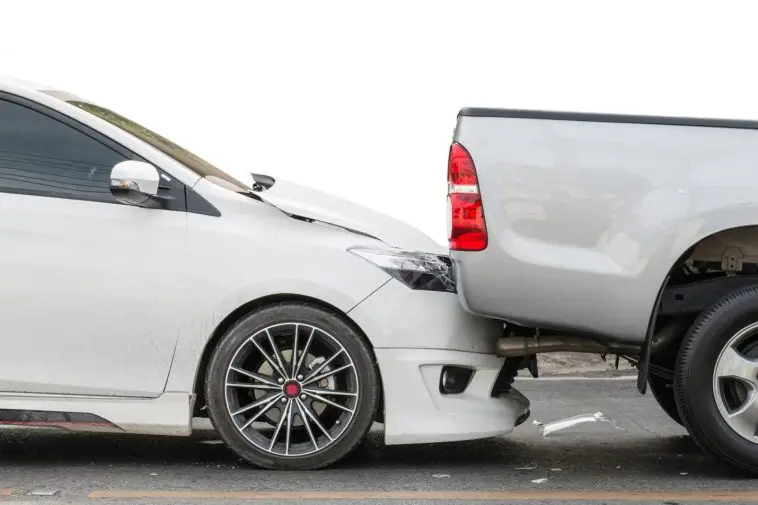On average, 6 million car accidents occur each year across the United States.
The moment you lose control and metal crunches on metal, dread sinks into your stomach. If you’re lucky and no one is injured, you have to endure the hassle of working out who was at fault.
Here’s a guide on four salient ways to help you navigate how to determine fault in a car accident.
- No-Fault Liability
Twelve states buck the traditional auto insurance model when it comes to liability. When you’re involved in a car accident in these states, you don’t need to invest time proving fault.
Every driver’s auto insurance cover takes care of their medical bills. As such, you can settle medical claims without the need of a personal injury lawyer.
Many no-fault car insurance policies also provide for the injured victim’s lost income. If the accident causes them not to continue working, the policy will compensate them for that lost income.
It’s worth noting, though, that no-fault auto insurance policies only deal with bodily injury claims and not property damage. If you damage a third party’s property, you’ll have to settle that claim using your liability coverage.
- ‘No-Doubt’ Liability
There are certain scenarios where insurance companies don’t argue over fault. If you’re involved in these types of accidents, the other driver is almost certainly at fault.
When another driver hits you from behind, it’s never your fault, no matter why you had to stop.
One of the road’s basic rules is that a driver needs to stop their vehicle safely if the traffic ahead stops. If a driver can’t stop safely in such a scenario, they were not driving safely in the first place.
In a rear-end collision, the vehicle damage shows how the accident took place. The back of one car will be damaged while the other car’s front will have taken on damage and demonstrated what happened.
Even if the driver who rear-ended you has a claim against the person that made you stop abruptly, it doesn’t excuse their car accident fault. You still have room to use these lawyers to get compensation for damages.
Another type of car accident where you don’t need to prove fault is a left-turn accident. A vehicle taking a left turn will almost always be at fault if it collides with another car coming straight in the other direction.
With that said, there are a few (and rare) exceptions to the presumed left-turn accident liability. If the car traveling straight was over the speed limit or went through a red light, the left-turning driver won’t be liable.
Additionally, if the left-turning car initiated its turn when it was safe but slowed down or stopped due to something unexpected, that driver isn’t at fault. You’ll have a difficult time proving this, though.
- Contributory Negligence vs. Comparative Negligence
When an accident occurs between two drivers, the situation is linear. But what happens if an accident involves three or more drivers? The outcome varies from state to state.
Depending on the state the accident occurred in, comparative or contributory negligence will take center stage.
With contributory negligence, if driver A can definitively show that driver B acted negligently and contributed to the accident to any degree, driver B won’t receive anything in the lawsuit.
Contributory negligence is seen as harsh, and only a few states put it in practice.
In contrast, comparative negligence spreads the fault for the accident between the drivers. If the other driver is partly to blame, a driver’s liability may be reduced but not eliminated.
For example, if one or both of your rear brake lights in a rear-end accident are out, then comparative negligence kicks in. You’ll partly be at fault even if the accident was the other driver’s fault.
Comparative negligence falls into two subclasses, i.e., pure and modified comparative negligence.
Pure comparative negligence is where the liability is apportioned depending on the percentage of each driver’s fault. For example, if you’re to blame for 40% of the accident and your damages are at $15,000, you’ll only get $6,000.
Modified comparative negligence splits the liability according to each driver’s percentage of fault but up to a certain point. That limit is usually 50%. Thus, if a driver is responsible for 50% of the fault, they can’t recover anything.
- Police Reports
The police won’t come to every car accident scene. When they usually do, it’s an accident where people have sustained injuries. Once they show up, it’s likely they will write a report about it.
You have to ask your local police department’s traffic division to hand you a copy of the accident report.
In certain instances, the police report may expressly state the offer’s opinion on who violated traffic rules and if that violation led to the accident. If the police officer issues a citation, it’ll be part of the report.
Sometimes the police report will only feature careless driving or a traffic law violation without linking the violation to the accident. No matter how specific the mention is, it’s essential in determining fault.
When you find a factual error in the police report, you can amend it by providing the right information to the police. For example, showing the correct insurance information will help correct any wrong insurance information.
However, amending a fact in dispute, such as who was at fault, is rather difficult. Still, if you feel the need to object to a disputed fact in the police resort, you can ask the department for their procedure.
How to Determine Fault in a Car Accident
No matter what side of an auto accident you’re on, knowing how to determine fault in a car accident is critical. Don’t get behind the wheel until you learn the basics of determining who is at fault as it can help limit your exposure to liability.
Knowing who’s at fault in an accident is an example of useful life skills you need to pick up along the way. Our website features up-to-date news pieces to help you learn more about everyday stuff. Check out more of our articles for news that keeps you informed and entertained.



